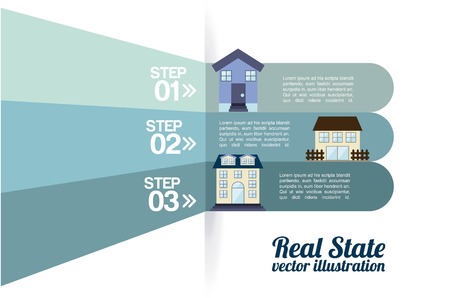Understanding the Types of Rental Property Insurance
When navigating the UK rental property market, selecting the right home insurance is crucial to safeguarding your investment and avoiding unnecessary pitfalls. It is essential to distinguish between landlord insurance, buildings insurance, and contents insurance, as each serves a unique purpose and offers different levels of protection. Landlord insurance is specifically designed for property owners renting out their homes. Unlike standard home insurance, it typically includes cover for loss of rent, liability for injuries to tenants or visitors, and legal expenses associated with tenancy disputes. In contrast, buildings insurance focuses solely on the physical structure of the property—covering damage from fire, flood, subsidence, or vandalism. This policy is often required by mortgage lenders and does not extend to tenant possessions. Contents insurance, meanwhile, protects items within the property that belong to you as the landlord—such as furniture and appliances provided for tenants’ use—but excludes tenants’ personal belongings. Understanding these distinctions is vital: many landlords mistakenly assume standard buildings or contents policies suffice for rental properties, only to find gaps in cover when making a claim. Clarifying these differences at the outset helps prevent costly oversights and ensures comprehensive protection aligned with UK regulations and market norms.
Assessing Coverage Needs for UK Rental Properties
When purchasing home insurance for rental properties in the UK, a critical step is to properly assess your coverage requirements. Overlooking this process often leads to underinsurance or unnecessary costs, both of which can be avoided with a methodical evaluation. The most effective approach involves a detailed consideration of three primary factors: local risks, tenant types, and occupancy patterns.
Understanding Local Risks
The specific location of your rental property heavily influences the kind and extent of insurance you should consider. For instance, properties in flood-prone areas or regions with high crime rates will require different protections than those in low-risk postcodes. Insurance providers often use postcode data to adjust premiums and exclusions, so it’s essential to research the unique risks associated with your property’s area.
| Local Risk Factor | Potential Impact on Cover | Recommended Action |
|---|---|---|
| Flooding | May require additional flood cover; standard policies may exclude flood damage | Check Environment Agency flood maps; consider specialist flood insurance |
| Burglaries | Higher risk may increase premiums or require specific security measures | Install approved locks and security systems; notify insurer of upgrades |
| Subsidence | Properties in certain areas more prone; can result in higher excess or exclusions | Get a structural survey; ensure policy includes subsidence cover if needed |
Considering Tenant Types
The nature of your tenants directly affects your insurance needs. Different tenant groups—such as students, professionals, families, or DSS tenants—pose varying levels of risk from an insurers perspective. Some insurers may not cover certain tenant types or may increase premiums based on perceived risks related to property wear-and-tear or likelihood of claims.
| Tenant Type | Typical Insurance Considerations | Best Practice |
|---|---|---|
| Students/Multiple Occupants (HMOs) | Higher risk of accidental damage; some policies exclude HMOs entirely | Select specialist landlord insurance that explicitly covers HMOs/students |
| DSS Tenants (Benefits Recipients) | Certain mainstream insurers may not provide cover or charge higher premiums | Seek out providers who accept DSS tenants and clarify terms upfront |
| Professional/Families | Tend to be viewed as lower risk by insurers; broader options available | Compare standard landlord insurance products for best value and coverage |
Evaluating Occupancy Patterns
The frequency and length of occupancy in your rental property also affect insurance requirements. Properties left vacant for extended periods (typically over 30 consecutive days) are considered higher risk due to increased vulnerability to vandalism, theft, and undetected maintenance issues. Standard policies often have strict clauses about unoccupancy.
| Occupancy Pattern | Insurance Implications | Recommended Steps |
|---|---|---|
| Continuous Tenancy/High Occupancy Rates | No special conditions; standard landlord policy sufficient if regularly occupied | Maintain up-to-date tenancy agreements and inform insurer of any changes |
| Frequent Vacancies/Empty Periods Over 30 Days | May invalidate standard cover; need for unoccupied property insurance | Arrange specialist cover during void periods and adhere strictly to policy requirements |
The Bottom Line: Tailor Your Cover Thoughtfully
Avoiding common pitfalls when insuring UK rental properties starts with a thorough assessment tailored to local risks, tenant demographics, and occupancy trends. This diligence ensures both compliance with policy terms and protection against unforeseen losses—a prudent practice for every responsible landlord.

3. Reviewing Policy Exclusions and Conditions
When arranging home insurance for rental properties in the UK, a critical step is to thoroughly review policy exclusions and conditions. Many landlords overlook these details, only to discover gaps in cover when making a claim. One of the most common exclusions is accidental damage, which is often not included as standard in landlord insurance policies. If your tenant unintentionally damages fixtures, fittings or furniture, you may not be covered unless you have specifically added accidental damage cover. Another key point to consider is the unoccupied property clause. Most insurers will limit or restrict cover if your rental property remains vacant for more than 30 consecutive days. During such periods, risks such as theft, vandalism, or water damage may not be insured unless you notify your provider and arrange additional protection. Furthermore, policies may contain conditions regarding regular property inspections, approved locks or security measures, and requirements to keep the property in good repair. Failure to comply with these conditions could invalidate your cover. Therefore, it is essential to scrutinise all exclusions and conditions before committing to a policy, ensuring that you fully understand where you are protected and where you are exposed to risk under UK insurance practices.
Complying with Legal Requirements and Tenancy Agreements
When purchasing home insurance for rental properties in the UK, landlords must not only consider financial protection but also ensure strict compliance with statutory obligations and tenancy law. Failing to adhere to these legal requirements can invalidate insurance policies or expose landlords to significant liabilities. Below is a breakdown of key statutory responsibilities and how they influence insurance choices.
Minimum Legal Insurance Requirements
While there is no blanket legal requirement in the UK for landlords to hold buildings insurance, mortgage providers almost always mandate it as a condition of lending. More importantly, several aspects of landlord-tenant law indirectly require adequate insurance cover to mitigate risks and fulfil legal duties.
| Legal Requirement | Description | Implication for Insurance |
|---|---|---|
| Buildings Insurance (Mortgage Condition) | Most lenders require cover against fire, flood, storm, and structural damage. | Mandatory if property is mortgaged; check policy meets lender’s minimum terms. |
| Landlord Liability Cover | Covers injury or property damage claims by tenants or visitors due to negligence. | Strongly advised; not legally required but often stipulated in tenancy agreements. |
| Gas Safety & Fire Safety Compliance | Legal obligation to provide gas safety certificates and smoke alarms. | Lack of compliance can void claims if an incident occurs. |
| Deposit Protection Schemes | Tenant deposits must be protected in government-approved schemes. | No direct link to insurance, but non-compliance increases risk exposure. |
Tenancy Agreement Clauses Affecting Insurance
Standard Assured Shorthold Tenancy (AST) agreements often contain clauses that directly affect insurance requirements. For example, tenants may be prohibited from subletting or making major alterations, which should align with policy conditions. Additionally, landlords are responsible for insuring the building and their own contents, while tenants are typically responsible for their personal belongings.
Best Practices for Landlords:
- Review your tenancy agreement: Ensure all insurance-related obligations are clear and compliant with current regulations.
- Communicate responsibilities: Inform tenants about what is covered under your policy versus what they need to insure themselves.
- Update policies regularly: Amend your insurance when tenancy terms change (e.g., new occupants or changes in permitted use).
Pitfalls to Avoid
- Underinsuring the property: Failing to meet lender or statutory minimums could result in denied claims or breach of contract.
- Mismatching cover with tenancy terms: Not aligning your insurance with tenancy agreements may lead to disputes or uncovered losses.
- Ignoring legal updates: Stay informed on changes in landlord-tenant law that may affect your insurance needs or obligations.
The interplay between statutory requirements and tenancy agreements means that careful attention must be paid at every step of arranging home insurance for rental properties in the UK. Ensuring full compliance not only safeguards your investment but also maintains a professional landlord-tenant relationship built on trust and transparency.
5. Comparing Providers and Understanding Excess
When purchasing home insurance for rental properties in the UK, it is essential to conduct a thorough comparison of providers and scrutinise the details of each policy quote. Here’s how you can navigate this process effectively:
Interpreting Insurance Quotes
Quotes from different insurers may appear similar at first glance, but closer inspection often reveals significant differences. Always check what is included in the quoted price—does it cover buildings only, or both buildings and contents? Examine whether accidental damage, loss of rent, or liability cover are standard or require additional premiums. In the UK, some policies might specifically exclude certain tenant types (such as students or DSS tenants), so confirm that your rental situation is covered.
Comparing Policy Terms and Conditions
Do not rely solely on headline figures. Review the policy wording carefully for exclusions, limitations, and endorsements. For example, some insurers may restrict claims related to water damage unless specific conditions are met, or they may impose additional requirements for unoccupied properties. Pay attention to any endorsements added to the schedule—they can alter your coverage significantly by imposing extra obligations or restricting claims for particular circumstances.
Understanding Excesses
Excess is the amount you must pay towards a claim before your insurer covers the rest. In the UK market, excess levels can vary widely between providers and for different types of claims (e.g., escape of water versus theft). A lower premium might come with a higher compulsory excess, increasing your out-of-pocket costs if you make a claim. Some policies offer voluntary excess options—raising this can reduce your premium but increases your financial exposure. Ensure you are clear on both compulsory and voluntary excess amounts before making a decision.
Key Points to Remember
– Compare like-for-like by checking all included covers and optional extras
– Scrutinise all endorsements and exclusions in detail
– Understand how excess applies to different claim scenarios
– Confirm that the policy meets your property’s occupancy profile and tenancy type
– Balance premium savings against potential out-of-pocket costs in case of a claim
By methodically comparing quotes and understanding every aspect of excess and policy endorsements, landlords in the UK can avoid costly surprises and ensure their rental property is properly protected.
6. Maintaining Accurate Disclosure and Ongoing Updates
One of the most crucial aspects of securing the right home insurance for rental properties is ensuring that all information provided to your insurer is both accurate and up-to-date. Failure to disclose relevant details, whether intentional or accidental, can lead to voided policies or rejected claims, leaving landlords exposed to significant financial risk. It is essential to declare the property’s status as a rental from the outset, as standard home insurance often excludes tenanted properties. Additionally, landlords must specify key details such as the type of tenants (e.g., students, professionals, families), occupancy patterns, and any significant changes in the use or structure of the property.
Regularly reviewing your policy is equally important. Tenancy arrangements and property details are rarely static; new tenants may move in, renovations might be undertaken, or security features could be upgraded. Each of these changes can affect your insurance requirements and premiums. UK insurers expect prompt notification of material changes—failure to do so may invalidate cover or result in underinsurance. Set a routine to check your policy documents annually or whenever significant tenancy or property modifications occur.
Proactive communication with your insurer not only ensures compliance but also protects your investment. Many UK insurers provide online portals or helplines for policy updates, making it straightforward to keep records accurate. Remember, transparency and timely updates form the cornerstone of a robust rental property insurance strategy, providing peace of mind for both landlords and tenants alike.


